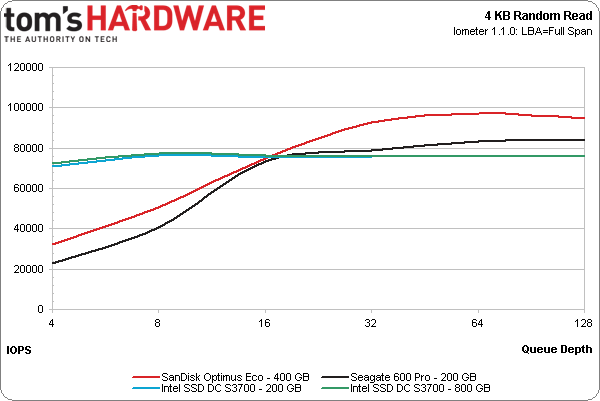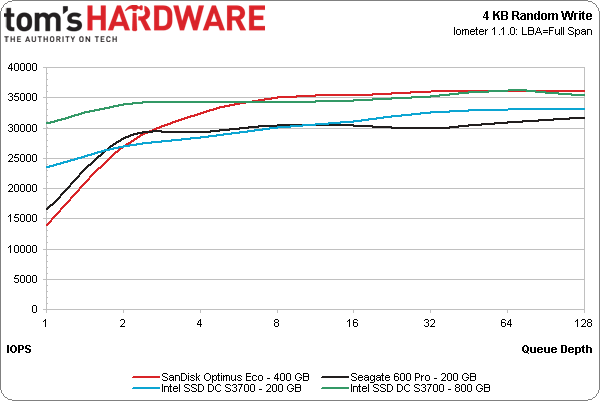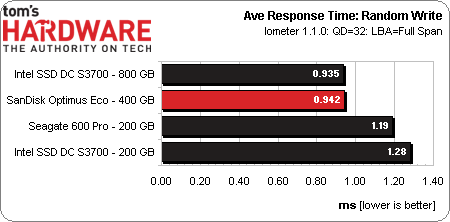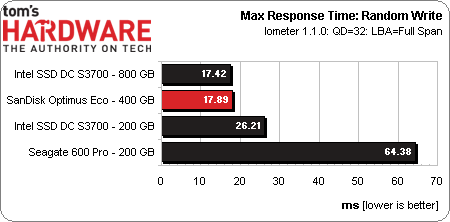SanDisk Optimus Eco SSD: A SAS Interface And Up To 2 TB Of Flash
Consolidation drastically changed the face of enterprise solid-state storage in 2013. One of the bigger moves was SanDisk's acquisition of SMART Storage Systems. Today, we're looking at the first branded SAS-based SSD to come from that purchase.
Results: 4 KB Random Performance And Latency
SanDisk claims that its Optimus Eco is well-suited for read-heavy apps, so delivering solid random read results is going to be important. Much like Seagate's 600 Pro, the Eco needs a queue depth of 16 before its performance really starts taking off, though. Beyond that point, it serves up outstanding I/O numbers, topping out in excess of 97,000 IOPS. That bests the rest of the field by nearly 14,000 IOPS.
The story of random write performance is similar, though the results are much closer. SanDisk and Seagate are both slower than Intel's models at lower queue depths. But the Optimus Eco eventually catches up to the SSD DC S3700 800 GB to eke out a win, even if it's only by 1000 IOPS. Overall, we have to give this round to Intel, if only because of its superior performance at low queue depths.
SanDisk's Optimus Eco and Intel's SSD DC S3700 basically achieve the same average response time. They deliver excellent performance and are both clearly ahead of the 200 GB SSD DC S3700 and 600 Pro. Maximum response time is also a near-draw as the 800 GB Intel drive leads by less than one-half of a millisecond.
With one page of testing complete, we're already getting more excited about SanDisk's enterprise-oriented SSD. For almost a year, we've praised Intel's SSD DC S3700 for its excellent performance. But the Optimus Eco is matching it at almost every turn.
Get Tom's Hardware's best news and in-depth reviews, straight to your inbox.
Current page: Results: 4 KB Random Performance And Latency
Prev Page Testing SanDisk's Optimus Eco Next Page Results: Performance Consistency


